( – promoted by Meteor Blades)
Welcome to the fifth edition of First Nations News & Views. This weekly series is one element in the “Invisible Indians” project put together by navajo and me, with assistance from the Native American Netroots Group. Last week’s edition is here. In this edition you will find Aji‘s essay on the brazen and lucrative slap in the face the “Twilight” series delivers to Indians, a look at the year 1599 in American Indian history, five news briefs and some linkable bulleted briefs. Click on any of the headlines below to take you directly to that section of News & Views or to any of our earlier editions.
This Week in American Indian History in 1599
New Federal Rule Would Speed Approval of Indian Solar and Wind Projects ~ Hate Crime on Navajo/Apache Woman Downgraded by Fresno D.A. ~ ‘Fighting Sioux’ Fight Continues, Rick Santorum Takes Sides ~ Student Challenges NYT Stereotypes About Wind River Reservation ~ Navajo Eco-Justice Group Opposes McCain/Kyl Water Settlement
There’s nothing “Indian” about Twilight.
Oh, sure, the books, TV series and movies all engage in lofty pretensions to the contrary, but there’s nothing Indian about them.

Twilight is the latest in a long line of books, TV shows, and movies involving the trendy vampire/werewolf theme. In this particular series, the werewolves are supposedly descended from the Pacific Northwest’s Quileute Nation – which, by the way, is still very much alive. Despite that, there’s no evidence that the series’ creator, Stephenie Meyer, asked the Quileute for permission to steal and utterly distort their sacred origin stories and then line her pockets by way of their exploitation.
This is not a new phenomenon, but there’s been a drastic uptick in recent decades. Hollywood kicked it into high gear, but what really cemented the practice was publication of Tony Hillerman’s first “Joe Leaphorn” mystery, set on the Navajo Nation. Hillerman thereafter made a reputation, a life and millions upon millions exploiting the Diné, and helped others, such as Aimee and David Thurlo, to follow in his footsteps. He blazed a trail for Lori Armstrong, Sandi Ault, Margaret Coel, James Doss, the Gears, Craig Johnson, Jennifer Kitchell, William Kent Krueger, Kirk Mitchell, and a host of others to imitate: a trail of exploitation, cultural theft and, in many instances, overt racism.
Animals often figure prominently in our traditional origin stories, and the Quileute are no exception:
Traditional stories take place at the Time of Beginnings in the world, back when animals were like human beings. They could [sic] talk and paddle canoes and live in longhouses.
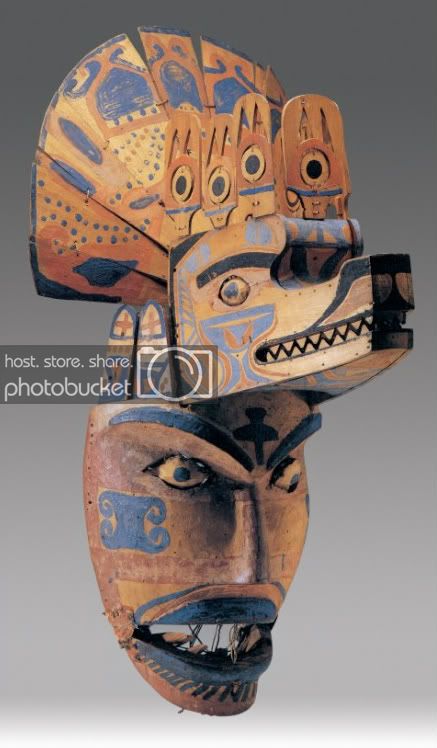
(Courtesy of American Museum
of Natural History Library)
As they tell it, in the old days, their ancestors had been washed away from their original lands, to a new place where they were surrounded by strangers. One of their spirit beings, known as a Transformer, traveled to this new place, where he encountered a pair of wolves, male and female. He changed them into humans and they became the Quileute First Man and First Woman.
Note that nothing in the story involves shape-shifting or skin-changing or skin-walking or witchery or werewolfery or other such quasi-violent, sensationalistic interpretations. It has nothing to do with Indians turning lupine when the moon is full, or becoming savage animals when feeling threatened, or vampires (or any other putative group) being their mortal enemies. It’s merely an origin story, like those of indigenous peoples the world over, putting how they came to be in a context that accords with their history and their spiritual beliefs and traditions.
In 2010, with the help of the Seattle Art Museum, the Quileute began taking back their story. The museum’s curator and staff worked closely with tribal representatives to tell their people’s story as it really is, debunking the Hollywoodized mythology in the process. Instead of mounting a static exhibit, they worked together to make it a truly interactive, year-long educational experience. The on-site exhibit displayed traditional Quileute art and historical and cultural items, both ancient and contemporary, including paintings, photography, jewelry, masks, weaving, baskets, regalia, and other pieces. The museum also coordinated programs, tours, a teen workshop, drumming circles and other activities with the Quileute on their lands, and worked with the tribe to create accurate teaching guides and other resources for educators to use.
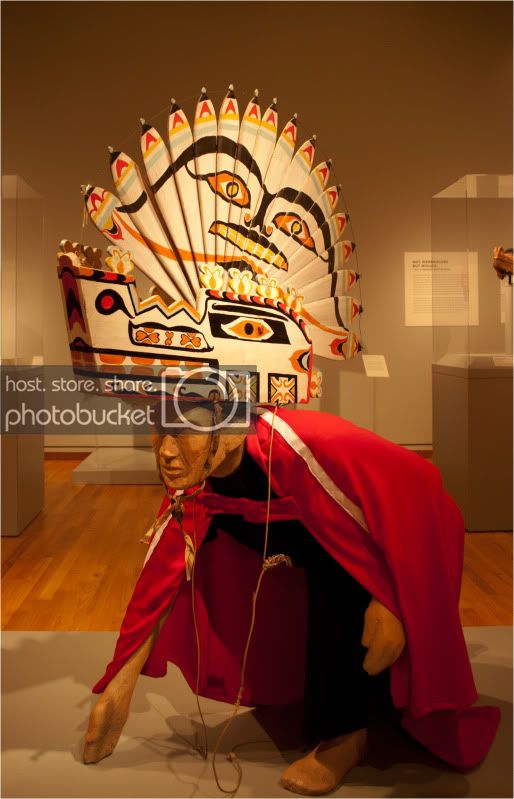
(Courtesy of the Smithsonian)
The exhibit has garnered significant media coverage – although that, too, is not without problems. The Washington Post‘s “Team Wolf” provides a good example: It does a thorough job of quoting the Seattle Art Museum exhibit’s non-Indian curator about the details of the exhibit, including the importance for the Quileute of reclaiming their narrative. But wouldn’t it ordinarily be required to go straight to the source for at least one quote, i.e., to an actual member of the Quileute Nation? Apparently, talking to actual Indians about their own tribe’s exhibit and origin story was not considered necessary to “reporting” about either the exhibit or the story.
Will every visitor be happy with the exhibit? Probably not. The curator chose to include a reproduction of a so-called “raven necklace” that appears in the Twilight movies, and there are a few other such references throughout. In addition, the Quileute Nation has highlighted Twilight on its website, a decision that may disappoint some traditionals. But it is understandable: They have shrewdly used the linkage to obtain celebrity support for environmental and safety initiatives and may ultimately get from them the help needed to retake complete control of their own narrative.
The exhibition at the Seattle Art Museum closed on Aug. 14, 2011, but it can still be seen at the Smithsonian’s National Museum of the American Indian in Washington, D.C., through May 9, 2012.
– Aji

On Feb. 12, 1599, in the mesa-top Pueblo of Acoma in what is now central-west New Mexico, Juan de Oñate ordered punishment for the 80 surviving warriors who had battled the Spanish for three days. Every man 25 and older among them had a foot cut off and was enslaved for 20 years. Everyone 12 to 25 merely had his foot cut off.
Thus did Oñate begin his 10th month among the pueblos. Known as “the last conquistador,” he had arrived in the spring of 1598 with a band of friars, soldiers and other fortune-hunters, figuring to repeat his father’s success in what is now northern Mexico. There the elder Oñate had gotten rich conquering and converting the Native people whose land would soon be the source of millions of ounces of silver shipped back to Spain. For his son, however, there would be no silver and no fame.
A few of the 19 New Mexico pueblos crumpled without resistance when faced with the Toledo blades of Oñate’s armored soldiers on horseback. But he and his men knew they could not win a war in a head-to-head contest against thousands of Indians. So they set out for Acoma, a natural fortress atop a steep-sided sandstone bluff, 367 feet above the valley floor. Official correspondence of the expedition shows that Oñate had all along intended to make an example of the Keres people of Acoma, razing their stone and adobe houses and ceremonial buildings in the belief the other pueblos would yield before this show of force.
But when the Spaniards arrived to declare “this land belongs to the king of Spain” and to demand food and other supplies, the Keres said “no” and proceeded to kill 13 of the invaders. In response, the soldiers massacred 800 Indians without regard to age or sex, slicing and stabbing and throwing them over the cliffs. They enslaved the 500 survivors and chopped off 80 feet, although some historians claim it was “only” 24.
On the 400th anniversary of Oñate’s entrance into New Mexico, state officials invited the people of Acoma to tell their version of the story in commemorative ceremonies, but they refused to participate. In January 1998, someone cut off the bronze foot of the only statue of Oñate in New Mexico, leaving a note saying “Fair is fair.” Another huge statue of Oñate astride his Andalusian stallion was dedicated in 2007 in El Paso, Texas. The Spanish ambassador made an appearance. So did protesters from Acoma.
The Pueblo of Acoma’s “Sky City” is a recognized site of the National Trust for Historic Preservation. At around 1000 years, Acoma is the oldest continuously occupied community in the United States. The pueblo’s enrollment as of 2010 was 4,989, who now communally own about 10 percent of the land their ancestors did when Oñate arrived.
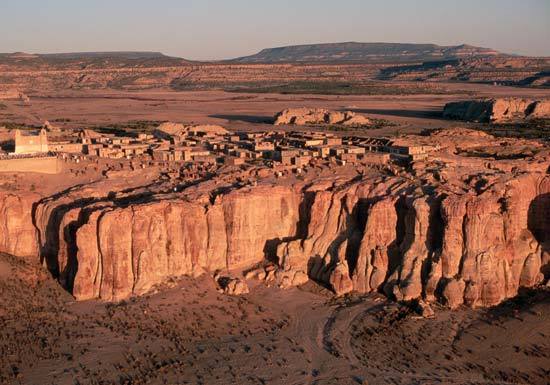
– Meteor Blades
On Feb. 17, 2009, the 100th anniversary of the death of Geronimo (Chiricahua Apache), his great-grandson and other descendants filed a lawsuit in federal court against Yale University, secretive student society Skull and Bones and the federal government. The suit alleged the Geronimo’s remains were stolen by the society’s members in 1918 from his grave in Oklahoma and taken to Connecticut. Descendants wanted to rebury the remains in New Mexico. The lawsuit was dismissed in 2010.
– Meteor Blades

New Federal Rule Would Speed Approval of Indian Solar and Wind Projects

January fog on a ridge of the Kumeyaay
reservation in southern California.
(Photo by navajo)
For 125 years, American Indian lands have been exploited for their energy resources. Oil, coal, natural gas and uranium have all fed the nation’s appetite for fuel and electricity. Corruption at the Bureau of Indians Affairs, which has included everything from putting non-Indians on tribal rolls to sweetheart arrangements with corporations, transferred much of the wealth derived from these resources away from the tribes. Even when corruption was not at issue, BIA deals with non-Indians for tribal resources often amounted to rip-offs, and the process for royalty payments was more like embezzling than accounting.
There are still ample conventional resources being mined and drilled on tribal land. But the tribes have an abundance of some other resources for which there is a steadily growing demand: wind and sun. While Indian lands constitute only about 5 percent of U.S. territory, they contain 10 percent of its renewable energy resources. About 15 percent of the nation’s estimated wind resources can be found on reservations. And the Department of Energy estimates the solar energy potential of tribal lands equivalent to four-and-a-half times the nation’s electricity production.
That’s a good thing because tribal lands are subject to many of the worst effects from climate change: drought, water scarcity, flooding and extreme weather, such as record-breaking snowstorms and warmer winter temperatures. Not only can the tribes help provide themselves and others with renewably generated electricity, doing so could over time reduce the impact of climate change. A modern version of trying to live in harmony with nature.
The problem has been turning tribal renewable resources into electricity. Standing in the way has been a morass of bureaucratic rules that are far more cumbersome than what non-tribal developers face. President Obama promised in December 2010 to streamline those rules.
A year ago, reporter Justin Gerdes interviewed Jose Aguto, policy adviser with the National Congress of American Indians (NCAI). He described the bureaucratic obstacles slowing tribal renewable energy projects.
“As [former U.S.] Senator [Byron] Dorgan was wont to say, ’49 steps and two to three years in Indian Country, seven steps, two to three weeks, just outside Indian Country for similarly situated land’ – that’s the broad-brush inequity that we’re talking about,” he said. “In Indian Country, only the Department of Interior can do appraisal and approval, and they often don’t have expertise on the ground. Why not let tribes, or a third party, do the appraisal? And then have a 30-day window to approve?” he asked.
While a medium-sized wind farm can be spinning its turbines within 12-18 months after the permits are signed, for Indian lands it can, as Dorgan said, take years to get those permits. Or they can disapproved by a BIA official who is untrained in assessing such projects.
Monique LaChappa (Kumeyaay), chairwoman of the Kumeyaay tribe near Campo in southern California, had a similar story to tell:
“We need equal access to financing, a seat at the planning table, and streamlined processes for leasing, rights of way and environmental review to seize the opportunity before us,” she said.
Together with an outside partner that is the majority owner, the Kumeyaays have built a 50-megawatt wind farm atop the ridges of their reservation deep in southern California east of San Diego. It wasn’t easy navigating the regulatory barriers.
Indian tribes have been trying to get changes adopted since the Clinton Administration, according to John Dossett, general counsel at the National Congress of American Indians. For once the BIA and its parent, the Department of Interior, have been listening. In November, Interior Secretary Ken Salazar announced a 60-day comment period for a proposed new rule that would revamp 50-year-old surface leasing regulations on the 56 million acres Interior holds in trust for the tribes.
The short version: Simplified processes for green-lighting wind and solar projects; BIA agreement to the tribe’s negotiated value of tribal land without additional appraisals; 30- and 60-day deadlines for BIA approvals. If the deadline isn’t met, the project is automatically approved. More detail can be found here and here.
The comment period ended late last month, and the final rule is expected to be announced by the end of 2012.
-Meteor Blades

Hate Crime on Navajo/Apache Woman Downgraded by Fresno D.A.
On June 14, 2011 around 2:30 in the afternoon, Patty Dawson (Navajo/San Carlos Apache) was waiting at a stop sign when the car behind tapped her bumper. In the rear-view mirror she saw three people and decided not to get out since she was in Clovis, Calif., which has a reputation for hostility to Indians and other minorities. After the light turned green and Dawson began driving, the car that had bumped her began an aggressive pursuit, driving onto the shoulder and speeding along side her.
Fearful, she drove into an ARCO station parking lot where she thought she could be safe. Instead, the trio pulled Dawson out of her car and began to pound on her.
Witnesses told police they saw a white woman and two men with swastika tattoos and shaved heads kick and beat Dawson, leaving her unconscious and bleeding in the parking lot.
Dawson, a mother of a young family, said all she remembers is a woman covered in tattoos spitting on her, then hitting her so hard she blacked out. Two men – one with a swastika tattoo on his face and the other with a shaved head – joined in the beating, but it was mainly the woman attacking her, according to witness statements to the local police.
Dawson woke up in a Fresno emergency room having suffered a concussion and not being able to remember her name. Her nose was broken and she was severely bruised all over her body. A nurse, she was unable to work for a long time.

(Photo courtesy of Indian Country Today Media Network
When the three attackers fled the scene, they were followed by eyewitnesses who wrote down their license plate number. Consequently, Jennifer Davette Fraser was finally arrested three months later and was released on bail. Her two accomplices were not picked up.
According to law enforcement officials, Fraser’s charges will likely be upgraded to federal hate crime charges based on eyewitness accounts and the extensive injuries to Dawson. Under federal law, a hate crime is one “in which the defendant intentionally selects a victim … because of the actual or perceived race, color, religion, national origin, ethnicity, gender, disability or sexual orientation of any person…”
However, Fraser’s court appointed attorney stated in a preliminary hearing that she should not be charged with a hate crime because Fraser recently found out she has Native American blood. A continuance was granted so she could provide proper documention for the court. Proceedings were further delayed when Fraser was granted another continuance because of pregnancy. Fraser never provided proper documentation of her alleged Indian heritage.
Fraser is now charged with felonious assault, defined under California law as “an attack on another individual in which the attacker uses a dangerous weapon and seeks to cause serious harm but stops short of an attempt to kill the victim.”
Fraser requested a plea bargain. But Dawson’s family and other members of the American Indian community have complained that the incident was not thoroughly investigated. Numerous businesses at the scene have security surveillance cameras but investigators never asked for the footage, they claimed. Officers were more interested in what Dawson had done to provoke the attack. Nothing, she said. The family was also disturbed that while all participants were waiting in line for the court metal detectors Fraser was given court protection and the fact that in a mid-January meeting with Fresno District Attorney’s supervisor, Blake Gunderson refused to meet with Dawson’s assembled group of eight relatives and advocates. Gunderson only allowed four people to sit in his office when a nearby conference room could have easily accommodated all.
In the meeting, Gunderson allegedly told Dawson that he “didn’t see a hate crime here.” He told her that since she couldn’t remember the exact words her assailants were yelling when they chased her and spat on her, it was hard for him to prove it was race-related. “He said that if I was able to write down exactly what they said, it might help my case. So what I’m hearing is that I’m supposed to remember every detail after being beaten unconscious, write it all down for them, then do my own investigation to get evidence of a hate crime,” said Dawson, in tears. “I just want them to do their jobs. No matter how much I repeat myself about what happened that day, I’m not being heard. I’ve talked to detectives three times now, and I even saw my other attacker in court with Jennifer Fraser. I remember him from that day. They are still walking around free after tearing my life apart.”
This on-going case has gathered the attention of numerous American Indian groups, such as AIM [American Indian Movement]-West . The last few hearings have been attended by drumming groups plus individuals interested in showing their support for Dawson. The next scheduled hearing is on March 5 and groups are already planning their support. The Justice for Patty Dawson Committee has been formed and there is an online petition demanding that the Fresno County District Attorney and the US Department Of Justice Civil Rights Division bring justice to Patty Dawson.
-navajo with a h/t to dopper0189

‘Fighting Sioux’ Fight Continues, Rick Santorum Takes Sides
As we reported in the Feb. 12 edition of FNN&V, the NCAA’s ban on what it calls “abusive and hostile” nicknames has not ended in North Dakota. There, the use of the “Fighting Sioux” nickname for University of North Dakota athletic teams is now in its sixth year. Last week, the State Board of Education (SBHE) dragged the courts into the dispute, and GOP presidential candidate Rick Santorum joined in at a rally in Fargo.
Santorum was at a Feb. 15 campaign stop promoting his candidacy for the March 6 state caucus that will choose 28 delegates for the Republican National Convention. When a man handed him a “Fighting Sioux” hockey jersey, Santorum held it up and said to some cheers, “I sort of like that logo. What do you think?” Had the forum been larger, that question might have drawn a round of boos as well.
The real news came Feb. 13 when the SBHE decided to go to the state supreme court to block a statewide vote in support of a North Dakota law that requires the university to call all its teams the “Fighting Sioux.” The board initiated the lawsuit in a 7-1 vote after consultation with Attorney General Wayne Stenehjem. He thinks the law violates the state constitution. While board members see themselves defending constitutional prerogatives, however, nickname supporters who gathered signatures to force the referendum see the board’s move as an attempt to silence voters. To overturn the law, four of the five supreme court members must rule it is unconstitutional. Which would render the referendum moot.
Reed Soderstrom, a leader of the referendum forces, issued a statement:
“It is clear to us they fear an overwhelming mandate would be given by those voters to keep the name. It is also clear to us that with this decision, the board has lost their way, and should no longer be entrusted with the responsibility of oversight of the university system.”
The board decision is just the latest official action in a long string stemming from the NCCA’s 2005 rule against insulting American Indian nicknames and mascots. Exceptions were allowed for schools that got direct permission from the tribes whose names their teams used. Three teams did so. But UND was only able to get one of North Dakota’s two Sioux (Lakota) tribes to agree. That wasn’t good enough for the NCAA. Rather than lose valuable revenue, the university acquiesced.
But shortly after UND announced in November 2010 that it would start removing the name and logo from its team’s uniforms, souvenir tee-shirts and other items, the state legislature passed a law requiring it to keep the name. The transition was put on hold. After a meeting in August 2011 at which the NCAA said it would not budge on the issue, the legislature repealed the law. Again, the university started removing the logo and ordering new uniforms. The cost of the transition? $750,000.
But then citizens, including some Indians from both North Dakota tribes, began circulating a petition to hold a voter referendum in support of the law. They turned in 3000 more names than needed to get the matter on the state’s June ballot. Consequently, because of the way referendums work in North Dakota, the repealed law is now back on the books until the matter is settled. That fact forced the UND president to reinstate the Fighting Sioux nickname. And that brought about the SBHE’s lawsuit.
Whatever the outcome of the court battle and the referendum, however, there are three interrelated problems for UND that could deeply wound the university’s athletic programs if the nickname and logo are retained. One, of course, is the certainty of NCAA sanctions. Another is that more and more rival teams are saying they won’t play against UND if it keeps the nickname. And then there is UND’s new membership in the Big Sky Conference.
UND Athletic director Brian Faison has warned that “The tone has gotten more serious. […] How patient, ultimately, the presidents will be with where we find ourselves? I can’t say,” he said. “It’s absolutely frightening to think what would happen if we lost our Big Sky membership.” And, on Friday, Tim O’Keefe, chief of the UND Alumni Association, said the university’s future, “athletically, academically, in stature and in reputation,” is at stake if nickname supporters prevail and force UND to keep the name and logo despite NCAA sanctions.
In all the meetings during the past years involving the NCAA, the legislature, the UND board and the SBHE board, nobody has thought to include at the table anyone from the Spirit Lake Tribe (Sisseton Wahpeton), which favors keeping the nickname, or the Standing Rock Tribe (Lakota, Yanktonai, Dakota), which opposes it. So we have invisible real Indians even when the issue is a highly visible representation of an idealized Indian.
-Meteor Blades

Student Challenges NYT Stereotypes About Wind River Reservation
The original story made page one of The New York Times on Feb. 3. It documented what almost seemed to be a reign of terror: brutal homicides, sexual assaults, chaotic law enforcement, broken homes, gangs, drunkenness and drug abuse, shockingly high unemployment even by reservation standards and the poverty to go with it, child abuse, Indian-white tension, an expected life span more than 20 years below the national average, soaring teen pregnancies and a sky-high school drop-out rate.
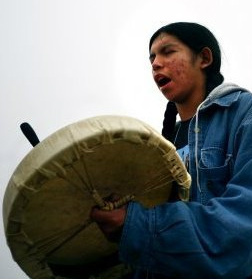
The place? Wind River Indian Reservation in central-west Wyoming, home to some 7500 Northern Arapaho and Eastern Shoshone and 17,000 non-Indians located in some of the nation’s most beautiful country. Sacajawea, the Shoshone woman who traveled with the Lewis and Clark expedition is buried there. A portion of the reservation was sold off to non-Indians under the 1906 Burke Act. That provided the land for the largest town within Wind River’s boundaries, Riverton, with about 10,000 residents, 90 percent of them non-Indian.
A two-year federal effort begun in 2009 on five of the nation’s most crime-plagued reservations reduced violent crimes on four of them. However, even though the effort temporarily increased the number of police officers from six to 37 at Wind River, the crime rate there increased.
For students at Fort Washakie Charter High School, reading that NYT story was disturbing, to say the least. English teacher Michael L. Read told the Times in an email, “These students know that there are problems in their community, but they also love it and are fully committed to honoring their ancestors and the future.” Student Willow Pingree (Shoshone/Arapahoe) wrote a comment on the Times web site. Out of this came a conference call and a request for Pingree to write a lengthier reply. He did. It didn’t make the front page. It didn’t make the print edition at all. But Pingree had his say. Here is an excerpt:
During the time of our ancestors, the Shoshone and Arapaho people once were enemies who constantly fought each other for land and food. After the reservation was established in 1876, the federal government moved the Northern Arapaho people to a temporary home on the Shoshone reservation in Wyoming. Washakie, chief of the Eastern Band of Shoshones, allowed the Arapaho tribe to stay on the reservation while the government sought a different home for them. The Northern Arapaho tribe was never relocated to a different reservation, nor were they ever asked to leave by the Shoshones, and so they remained on the Shoshone reservation, now called the Wind River Reservation. […]
The people of both tribes still have their languages, their traditional beliefs and values. Involvement in tribal government allows people the opportunity to learn more about the history of the tribes and the reservation. Powwows, Sun Dances, picnics, memorial events such as walks, runs and feasts: These are just a few of the things that the people of the Wind River Reservation do to keep people, especially the young ones, away from drugs, alcohol and violence and help the communities and cultures become stronger.
The reservation sells no alcohol. However, most people buy their alcohol off-reservation. Alcoholism is often a contributing factor in the fatalities that have occurred on the reservation. That is not to say that the Shoshone or Arapaho tribes are not doing something to deal with these issues. …
After the Plains Indian Wars were over, and all tribes were confined to reservations, the Native children were forced to go to boarding schools to learn the Christian way of education. Their long hair, which was a symbol of pride and honor, was cut off and they were prohibited from speaking in the language of their people.
However, as time passed, the Native people of America began to renew the pride that they had in their cultures and languages, and began standing up for their rights as nations. Soon, schools began accepting the traditional values of Native people and even began teaching Native languages in schools. As Chief Washakie said: “I fought to keep our land, our water and our hunting grounds. Today, education is the weapon my people will need to protect them.” …
No matter what negative things we face every day, nothing can break our spirit. We will not give up the war to save our culture or our languages, the war that all Native people in America have been fighting for since 1492. I will fight to ensure the survival of our cultures and languages for the rest of my days on this Earth.
You can see and hear Pingree performing a drum chant here.
-Meteor Blades

Navajo Eco-Justice Group Opposes McCain/Kyl Water Settlement
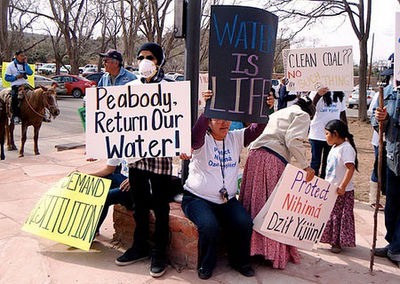
in Navajo capital of Window Rock, Ariz.
(Photo by Sierra Club)
It sounds like a reasonable idea at first glance. Federal legislation would put $315 million to work building three delivery systems that would supply groundwater drinking supplies to thousands of Hopi and Navajo who still must haul water to meet their needs. It will also make available to the Navajo some 6400 acre-feet of water out of Arizona’s allocation from the Colorado River. The arrangement was mostly put together behind closed doors. Arizona Sen. Jon Kyl, backed by fellow Republican Sen. John McCain, introduced it to an nearly empty Senate chamber Thursday, Feb. 16.
All the tribes must do is surrender their claims on Little Colorado River system water,
something they have so far refused to do. The Navajo would also be required to ensure continued operation of the coal-fired Navajo Generating Station near Page. That electricity-generating plant on leased tribal land, powered by coal tribal mines, must undergo extensive upgrades by 2016 or it will be shut down by the Environmental Protection Agency under its new toxic emissions rule. For towns and other water users along the Little Colorado, the settlement’s elimination of Navajo and Hopi claims to that water would offer freedom from the insecurity caused by the threat of tribal lawsuits.
Said Kyl: “[This settlement] brings us one step closer to addressing the significant water needs of impoverished areas on the Navajo and Hopi reservations, while also providing certainty for non-Indian communities trying to plan for their water future,” he said. Flagstaff, Ariz., Mayor Sara Presler said: “If the tribes are going to achieve that next level of success, it’s necessary to have a secure water supply. In more urban areas of Arizona, we’re excited to see a new business open up, but we’re not asking the very basic questions of, ‘Do we have enough water to deliver to that business?’”
Dine’ CARE-Citizens Against Ruining our Environment, a Navajo advocacy organization, doesn’t see things that way. The group said in a statement Thursday:
Dine’ CARE strongly condemns the Big Business Salt River Project, Navajo Generating Station and Central Arizona Project bill portrayed as providing water to the Navajo Nation and Hopi to make life better.
In reality this is a death sentence where the Indigenous Peoples will be forever giving up their water rights to Lower Colorado River. […]
The 1970s Salt River Project lawyer, Senator Jon Kyl, is still carrying out SRP and CAP’s priorities to take the water rights from aboriginal water owners in northern Arizona.”
To add insult to injury, not only has the Navajo Tribe suffered from receiving discounted value for water but suffer from consequences of pollution from Navajo Generating Station, who provides power for SRP and ensuring that Navajo Nation provide cheap electricity. A fair value is needed in this deal to not steal Navajo water and condemn the people to poor health from Navajo Generating Station’s pollution.
The Navajo Nation is already an energy and water colony for Phoenix, Tucson, Las Vegas, and southern California. If passed, signed, and enacted, the Kyl bill would guarantee 34,000 plus acre-feet a year to Navajo Generating Station for the proposed extended life of the power plant. It also favors Peabody Coal Company since its Kayenta Mine fuels NGS. […]
In sum, the KYL bill must be KILLED before it KILLS us.
Dine’ CARE president Adella Begaye said: “It is important for native communities to unite and oppose this legislation. We cannot afford to be idle as our future generations are robbed of their heritage and lifeline.”
A key worry is that the Kyl/McCain legislation would set a precedent that could extinguish Hopi and Navajo water rights under the so-called Winters Doctrine. That stems from an 8-1 U.S. Supreme Court ruling (Winters v. United States) in 1908 stating that tribes did not have to reserve rights to water on their land if they already had established by treaty or other agreements the right to use their lands for agriculture.
Broader previous agreements to settle water rights claims among the tribes, federal, state and local governments and other users have failed to gain Hopi and Navajo approval. The most recent didn’t make the grade in 2004.
-Meteor Blades

• Concern Expressed that Johnny Depp is cast as Tonto in Disney’s Lone Ranger: New Mexico State Rep. Sandra Jeff (Navajo) (D-Crownpoint.) said that an actor from one of the tribes of New Mexico should have been hired for the Tonto role. Depp is rumored to have taken a 20 percent pay cut to bring the film in line with its budget.
-navajo with a h/t to Bill in MD
• Pala Band of Mission Indians Removes 154 From Its Membership: Blood quantum is the likely reason. Members must have one-sixteenth Pala ancestry to receive payments from the band’s business ventures. Several other tribes in California, including the Chukchansi, United Auburn and San Pasqual, have also recently kicked members off their tribal rolls. These disenrolled Indians have been cut off from their tribal per capita payments from casino revenues, collectively, hundreds of millions of dollars.
-navajo
• Napa Valley Museum Damages Loaned Pomo Artifacts, Complaint Settled: Coleen McCloud (Kashia Band of Pomo Indians) and her husband Chester McCloud (Big Valley Band of Pomo Indians) sued when their 7-foot-tall, old-growth bark house was lost and several artifacts were mishandled.
– navajo
• Ngobe-Bugle Indians Block Road to Protest Dams and Mining: For the second time in two weeks, the Panamanian tribe used stones and branches to blockade roads in Bocas del Toro and Chiriqui in western Panama. Tribal members are angry that the government has lifted a mining moratorium on Indian lands.
-Meteor Blades
• President of Indigenous Language Institute: ‘Racisim is Alive and Well in Wisconsin’: Jerry L. Hill (Oneida Nation) wrote that the Washinawatok incident in which a girl was suspended for speaking her Native language (see FNN&V of Feb. 5) has served to refocus Indian attention on the issue of boarding schools. Indian children forced into such schools from the 1870s through the 1960s were not allowed to speak their own tongues, and the issue remains a sore point today.
-navajo
• University of Southern Mississippi Plans Community Housing Option for Indian Students: The new option will house American Indian students on one floor of dormitory so they can provide support for one another. USM student Cody Roth (Choctaw) grew up just off of the Choctaw Indian Reservation. “Native American students, when they come here, they come from tight-knit communities where everybody knows everybody,” Roth said. The dorm arrangement could provide a substitute for that at-home community.
-Meteor Blades
• New on DVD: Indian School, A Survivors Story: The documentary interviews students of the Mt. Pleasant Indian Industrial Boarding School established in 1893 by an act of Congress. Indian children were forcefully removed from their families into the mid 1950s to be assimilated. The result was multi-generational trauma in effect today.
-navajo with a h/t to Bill in MD
• The Berenstain Bears have been translated into Lakota: Matȟó Waúŋšila Thiwáhe-The Compassionate Bear Family is the title of the Lakota version. In an effort to keep the language alive the cartoon series helps adults learn along with their children. All 20 episode video links are available in the headline. If you’ve not heard Lakota, here is your chance.
– navajo
• American Small Business League Complains Too Many Contracts Going to Alaska Natives: The league reviewed the top 100 contractors in the Small Business Administration’s 8(a) program and found 33 were Alaska Native Corporations that exceeded small business size standards the SBA normally requires. These 33 corporations won $2.6 billion of the $6.9 billion awarded to the top 100 small business firms. ANCs can take advantage of several regulatory and legislative privileges that allow them to exist as large businesses in the program, which is designed to benefit small businesses.
-Meteor Blades
Indians have often been referred to as the “Vanishing Americans.” But we are still here, entangled each in his or her unique way with modern America, blended into the dominant culture or not, full-blood or not, on the reservation or not, and living lives much like the lives of other Americans, but with differences related to our history on this continent, our diverse cultures and religions, and our special legal status. To most other Americans, we are invisible, or only perceived in the most stereotyped fashion.First Nations News & Views is designed to provide a window into our world, each Sunday reporting on a small number of stories, both the good and the not-so-good, and providing a reminder of where we came from, what we are doing now and what matters to us. We wish to make it clear that neither navajo nor I make any claim whatsoever to speak for anyone other than ourselves, as individuals, not for the Navajo people or the Seminole people, the tribes in which we are enrolled as members, nor, of course, the people of any other tribes.
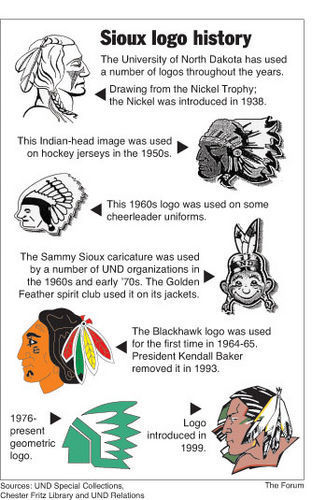
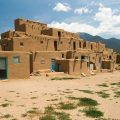



Leave a Reply